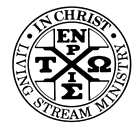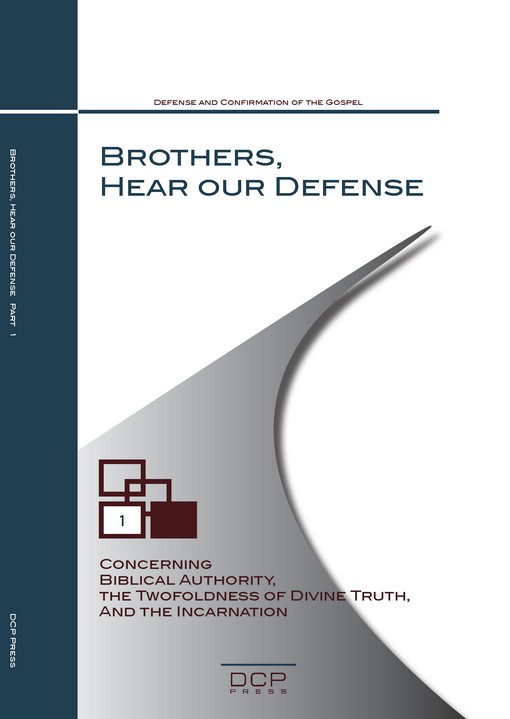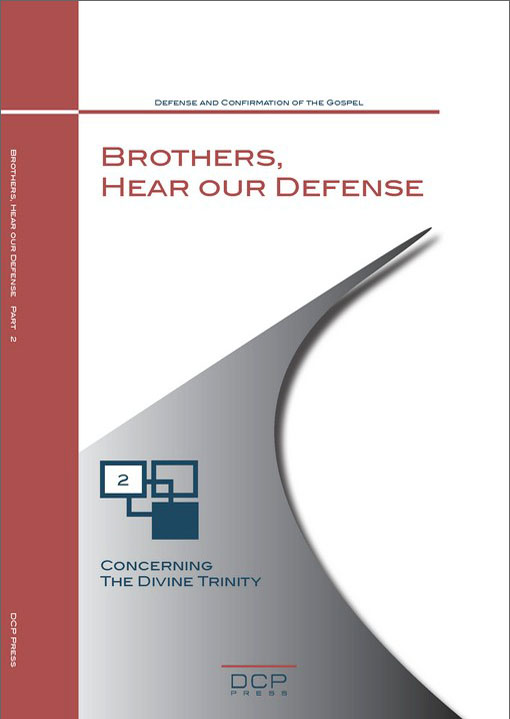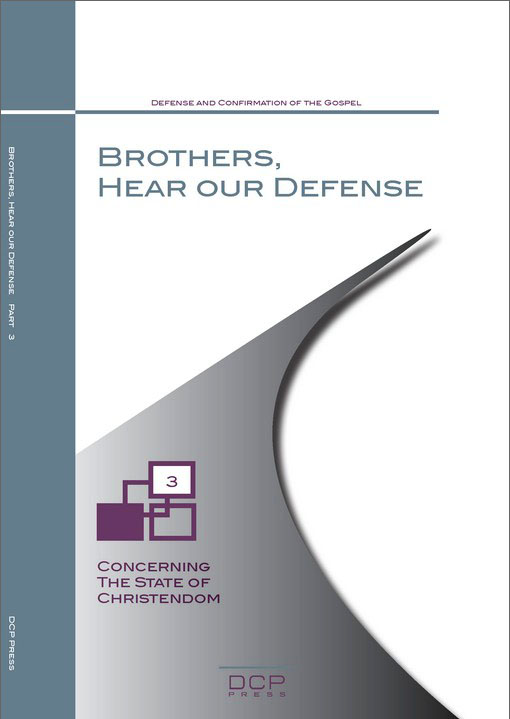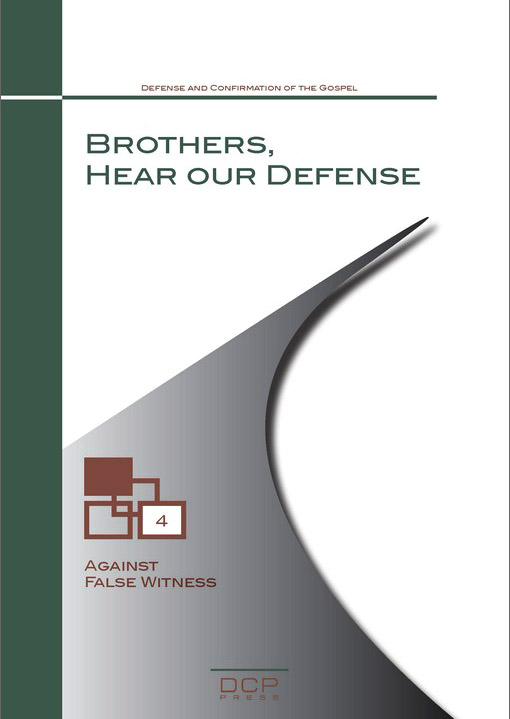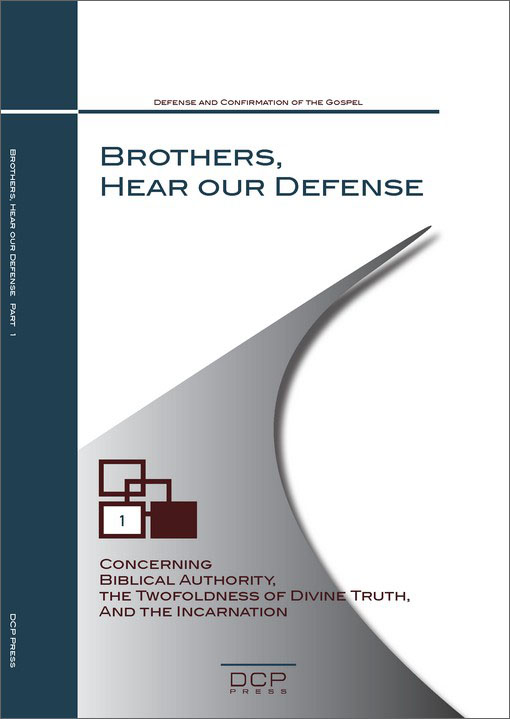The inclusion of the following quotes in this document is not meant to imply that their sources agree entirely with the teachings of Witness Lee and the local churches on every point of interpretation or that we in the local churches agree entirely with them on every point of truth. All of these sources do, however, identify the Lord Jesus as the Spirit.
Athanasius — Study too the context and ‘turn to the Lord;’ now ‘the Lord is that Spirit;’ and you will see that it is the Son who is signified.
Athanasius, “Against the Arians, I, 4:11,” A Select Library of the Nicene and Post-Nicene Fathers of the Christian Church, Series 2, Vol. IV, Philip Schaff and Henry Wace, eds., (Grand Rapids, MI: Wm. B. Eerdmans Publishing Company, 1891), p. 312
Marius Victorinus — The Holy Spirit in some sense is Jesus Christ Himself, but a Christ hidden from sight, a Christ within, who converses with souls and teaches these things; gives understanding…
Marius Victorinus, quoted in Henry Barclay Swete, The Holy Spirit in the Ancient Church (London, Macmillan and Co., Ltd., 1912), pp. 306-307
John Albert Bengel — 17. Now the Lord is the Spirit—The Lord (to whom they shall turn, ver. 16) is the Spirit (received at this conversion. Comp. Rom. viii.9-11… The turning is made to the Lord, as the Spirit. And where the Spirit of the Lord is—Where Christ is, there is the Spirit of Christ; where the Spirit of Christ is, there is Christ; Rom. viii. 9, 10.
John Albert Bengel, New Testament Word Studies (Grand Rapids, MI: Kregel Publications, 1971), p. 288
Charles Hodge — It is plain that the Lord here means Christ. This is clear not only because the word Lord, as a general rule, in the New Testament, refers to Christ, but also because the context in this case demands that reference. In v. 14 it is said that the veil is done away in Christ, and in v. 16 that it is removed when the heart turns to the Lord, and here that the Lord is the Spirit.
Charles Hodge, An Exposition of the Second Epistle to the Corinthians (Grand Rapids, MI: Baker Book House, 1859, 1980), p. 73
“The Lord is the Spirit,” that is, Christ is the Holy Spirit; they are one and the same.
Charles Hodge, An Exposition of the Second Epistle to the Corinthians (Grand Rapids, MI: Baker Book House, 1859, 1980), p. 74
Robert Jamieson, A. R. Fausset, and David Brown — 17. the Lord—Christ (vv. 14, 16; ch. iv. 5). is that Spirit—is THE Spirit; viz., that Spirit spoken of in v. 6, and here resumed after the parenthesis (vv. 7-16)…
Robert Jamieson, A. R. Fausset, and David Brown, A Commentary on the Old and New Testaments, vol. 3 (Peabody, MA: Hendrickson Publishers, 2002), p. 345
Joseph Cook — It is significant beyond comment that our Lord was often called “The Spirit,” and “The Spirit of God,” by the early Christian writers. “The Son is the Holy Spirit,” is a common expression. Ignatius said: “Christ is the Immaculate Spirit.” Tertullian wrote: “The Spirit of God and the Reason of God—Word of Reason and Reason and Spirit of Word—Jesus Christ our Lord, who is both the one and the other.” Cyprian and Iræneus said: “He is the Holy Spirit.”
Joseph Cook, The Boston Monday Lectures, vol. 1 (London: Richard D. Dickinson, 1881), p. 78
Marvin R. Vincent — Paul identifies Christ personally with the Spirit (2 Cor. iii. 17); and in Rom. viii. 9, 10, “Spirit of God,” “Spirit of Christ,” and “Christ” are used as convertible terms.
Marvin R. Vincent, Word Studies in the New Testament, vol. IV (Grand Rapids, MI: William B. Eerdmans, 1887, 1980), p. 243; see also vol. III, pp. 308 and 423
Andrew Murray — It was when our Lord Jesus was exalted into the life of the Spirit that He became ‘the Lord the Spirit,’ could give the New Testament Spirit, and in the Spirit come Himself to His people.
Andrew Murray, The Spirit of Christ (Fort Washington, PA: Christian Literature Crusade, 1963, 1978), p. 167; see also p. 168
Hermann Gunkel — It must seem strange that in some passages Paul simply identifies the Spirit with Christ (1 Cor. 15:45; see 6:17; 2 Cor. 3:17). According to these passages the Spirit does not come through Christ; rather, Christ himself is this Spirit.
Hermann Gunkel, The Influence of the Holy Spirit: The Popular View of the Apostolic Age and the Teaching of the Apostle Paul, translated by Roy A. Harrisville and Philip A. Quanbeck II (Philadelphia, PA: Fortress Press, 1979), p. 113
A. B. Simpson — Let us bear in mind … that the Holy Spirit identifies Himself with the Lord Jesus and that the coming of the Comforter is just the coming of Jesus Himself to the heart.
A. B. Simpson, When the Comforter Comes, 2nd day (Harrisburg, PA: Christian Publishers, c1911)
James Denney — The Lord, of course, is Christ, and the Spirit is that which Paul has already spoken of in the sixth verse. It is the Holy Spirit, the Lord and Giver of life under the new covenant. He who turns to Christ receives the Spirit…. Practically, therefore, the two may be identified…. Here, so far as the practical experience of Christians goes, no distinction is made between the Spirit of Christ and Christ Himself….
James Denney, The Second Epistle to the Corinthians (London: Hodder and Stroughton, 1894), pp. 133-134
Alexander Balmain Bruce — Hence it comes that the Spirit and Christ are sometimes identified, as in the sentence, “The Lord is the Spirit,” and the expression, “The Lord the Spirit.” As a matter of subjective experience the two indwellings cannot be distinguished; to consciousness they are one. The Spirit is the alter ego of the Lord.
Alexander Balmain Bruce, St. Paul’s Conception of Christianity (Edinburgh: T&T Clark, 1896), p. 254
David Somerville — But Paul not only identifies the Spirit of God with that of Christ, he identifies both with the very Person of Christ. “The Lord is the Spirit,” we read; and again, “we are changed into the same image by the Lord, the Spirit.” …in the thought of the apostle, “Christ,” the “Spirit of Christ,” and “the Spirit of God” are practically synonymous. At the Resurrection Christ became a Life-giving Spirit to mankind…
David Somerville, St. Paul’s Conception of Christ (Edinburgh: T&T Clark, 1897), pp. 117-118; see also pp. 121, 122
John Peter Lange — ‘But the Lord, to whom their heart thus turns, is the Spirit.’ Many artificial explanations have been given of this verse. Without noticing those attempts which have been in direct contradiction to the meaning of the words and the scope of the context…we find here such an identification of Christ and the Holy Spirit, that the Lord, to whom the heart turns, is in no practical respect different from the Holy Spirit received in conversion.
John Peter Lange, Commentary on the Holy Scriptures: Critical, Doctrinal and Homiletical, translated and edited by Philip Schaff, Volume 10, “The Second Epistle of Paul to the Corinthians” (Grand Rapids, MI: Zondervan Publishing House, 1960), p. 58
Henry Barclay Swete — The Spirit in its working was found to be in effect the equivalent of Jesus Christ. Thus St Paul writes, If any has not Christ’s Spirit, that man is not his (Christ’s); but if Christ is in you, the body indeed is dead…but the spirit is life…, where the possession of the Spirit of Christ is clearly regarded as tantamount to an indwelling of Christ Himself. The same line of thought seems to be followed in the words, The Lord is the Spirit, but where the Spirit of the Lord is, there is liberty. But we all…are being transformed…as by the Lord the Spirit, where ‘the Spirit of the Lord’ and ‘the Lord the Spirit’ (i.e. Christ in the power of His glorified life) are viewed as being in practice the same.
Henry Barclay Swete, The Holy Spirit in the New Testament (Grand Rapids, MI: Baker Book House, 1910), pp. 300-301; see also pp. 301-304
Adolf Deissmann — As Pneuma, as Spirit the living Christ is not far off, above clouds and stars, but near, present on our poor earth he dwells and rules in His own. Here again, there is no lack of suggestion in this direction in the Septuagint, and Paul himself created the significant formulæ:
The Lord is the Spirit,
The last Adam became a life-giving Spirit,
He that is joined to the Lord is one Spirit.
Adolf Deissmann, Paul: A Study in Social and Religious History, translated by William E. Wilson (Gloucester, MA: Peter Smith, 1912, 1972), p. 138; see also p. 140
W. H. Griffith Thomas — Then there is a close association of the Spirit of God and the Spirit of Christ with the Person of Christ. No line of demarcation is drawn between Christ and the Spirit. The great passage is 2 Cor. iii. 17. ‘Now the Lord is the Spirit.’ So close is the association that [A. B.] Bruce is able to say, ‘The Spirit is the Alter Ego of the Lord.’
W. H. Griffith Thomas, The Holy Spirit (Grand Rapids, MI: Kregel Publications, 1986), p. 34
Christ and the Spirit are different yet the same, the same yet different.
W. H. Griffith Thomas, The Holy Spirit (Grand Rapids, MI: Kregel Publications, 1986), p. 144
Thomas Rees — At the centre of Paul’s thinking, where his thought is most his own, Christ and the Spirit are practically and essentially one; but at the circumference, where his thought speaks the language of his time, the two are formally distinct.
Thomas Rees, The Holy Spirit in Thought and Experience (New York: Charles Scribner’s Sons, 1915), p. 101
Robert C. Moberly — This grace, this peace, no longer only in the Person of Jesus Christ; —but through the Person of Jesus Christ, to you and in you: What is this but Christ in you? And how Christ in you,—save in, and as, Spirit? Christ in you, or the Spirit of Christ in you; these are not different realities; but the one is the method of the other. It is in the person of Christ that the Eternal God is revealed in manhood, to man. It is in the Person of His Spirit that the Incarnate Christ is Personally present with the spirit of each several man. The Holy Ghost is mainly revealed to us as the Spirit of the Incarnate.
Robert C. Moberly, Atonement and Personality (London, John Murray, 1917), p. 194
He breathed on the them, and saith unto them, “Receive ye [the] Holy Ghost—(λάβετε πνεῦμα ἅγιον). This is not the action of one who, by prayer, would invoke upon them, a Spirit which is not of, or from, Himself: it is the symbolism rather of one who would transfer to them the very Spirit which animates—which may be said to be—Himself.
Robert C. Moberly, Atonement and Personality (London, John Murray, 1917), pp. 196-197
Alan H. McNeile — He is so unutterably sure that he is filled with the Spirit of the risen Lord that the language which he uses about Christ and about the Holy Spirit is sometimes hardly distinguishable. The Spirit of God and the Spirit of Christ are one and the same (Rom. viii. 9). Christ and the Holy Spirit are spoken of in parallelism (ix. i. ‘He that is joined to the Lord [i.e. Christ] is one spirit’ (I Cor. vi. 17). ‘The Spirit of His Son’ (Gal. iv. 6). His Spirit in the inner man is equated with Christ dwelling in your hearts by faith (Eph. iii. 16, 17). ‘The supply of the Spirit of Christ Jesus’ (Phil. 1. 19). And most explicitly ‘The Lord is the Spirit’ (2 Cor. iii. 17), ‘the Lord Spirit’ (v. 18). ‘The last Adam became a life-giving Spirit’ (I Cor. xv. 45).
Thus if the Holy Spirit of God is the Spirit of Christ, it is equally true to say either that the Holy Spirit or Christ is in Christians, and they in Him.
Alan H. McNeile, St. Paul: His Life, Letters, and Christian Doctrine (Cambridge: University Press, 1920), pp. 283-284
Terrot R. Glover — Elsewhere Paul says explicitly: “The Lord is the Spirit, and where the Spirit of the Lord is, there is liberty.” The Spirit and the Risen Christ are for him practically indistinguishable—the source of the new life, the earnest of God’s intentions for us, the hope of glory, the origin of the graces of love, joy, peace and the rest.
Terrot R. Glover, Paul of Tarsus (London: Student Christian Movement, 1925), p. 219
R. Birch Hoyle — ‘Kyrios’ in verse 17 is the same person as the one mentioned in verse 16 and that reference points back to ‘Christ’ in verse 14; and from the context it would seem that the Lord is Christ, and in the sequel the ‘glory’ is on His face (v. 18 and iv. 6). Hence we conclude that by the phrase ‘The Lord is the Spirit’ Paul means ‘The Lord (i.e. the Risen Christ) is the Spirit’.
R. Birch Hoyle, The Holy Spirit in St. Paul (Garden City, NY: Doubleday, Doran, & Company, 1928), p. 143
H. Wheeler Robinson — Faith-surrender to the deliverer, Jesus Christ (“The Lord the Spirit”, 2 Cor. iii. 17, 18), unites this inner man with One Who, like the law, is spiritual, but, unlike the law, is able to deliver where that could only condemn. In both “justification” and “sanctification”, to use the technical terms of theology, the faith-union is a spiritual union with the Lord the Spirit, the risen and ascended Christ.
H. Wheeler Robinson, The Christian Experience of the Holy Spirit (New York: Harper & Brothers, 1928), p. 230
W. F. Lofthouse — It is spoken of as the spirit of God, and the spirit of Christ; or as the spirit of life acting in Christ (Rom. viii. 2); and in one passage, the Lord—Christ—and the Spirit are identified (2 Cor. iii. 17).
W. F. Lofthouse, The Father and the Son (London: Student Christian Movement Press, 1934), p. 179
R. H. Strachan — The Lord means the Spirit identifies Jesus and the Spirit, at least in the experience of men. The Lord is the risen and exalted Jesus, upon whom God has conferred ‘the name which is above every name’ (Phil. ii. 9 ff.). Moreover, it may be contended, the Jews did not need to turn to Jahveh, but to Christ. In Rom. viii. 9-11 the life of Christ in the Christian is identified with the life of the Spirit.
R. H. Strachan, The Second Epistle of Paul to the Corinthians (London: Hodder & Stoughton, 1935), p. 88
C. H. Dodd — Thus the “communion of the Holy Spirit” was also “the communion of the Son of God” (1 Cor. i. 9). It was not enough to say that Christ, being exalted to the right hand of God, had “poured forth” the Spirit. The presence of the Spirit in the Church is the presence of the Lord: “the Lord is the Spirit” (2 Cor. iii. 17).
C. H. Dodd, The Apostolic Preaching and Its Developments (London: Hodder & Stoughton (1936, 1944), p. 62
William R. Newell — But the other part of the great mystery is here before us in Romans 8:10: Christ is in us. Although, as we know, He is within us by His Spirit, yet it is Christ Himself who is in us. That the Spirit can make Christ present in us, we see in the beautiful words of II Corinthians 3.17, 18: “Now the Lord is the Spirit: … We … are transformed into the same image from glory to glory, even as from the Lord the Spirit.” Or, as Paul says in the solemn words of II Corinthians 13.5: “Know ye not as to your own selves, that Jesus Christ is in you?”
William R. Newell, Romans: Verse by Verse (Grand Rapids, MI: Kregel Classics, 1994), p. 302
Lucien Cerfaux — Because the article is there (t? p?e?µa), we think that Saint Paul meant by this word the Holy Spirit… But “when we turn to the Lord, the veil is taken away” (3:16 following Exod. 34:34). Paul takes “the Lord” to be Christ, and he adds the remark: the Lord, who is the Holy Spirit.
Lucien Cerfaux, Christ in the Theology of St. Paul, translated by Geoffrey Webb and Adrian Walker (New York: Herder and Herder, 1952, 1959), p. 293
William Barclay — In this passage Paul has set for many a theological problem. He says, “The Lord is the Spirit.” He seems to identify the Risen Lord and the Holy Spirit. We must remember that Paul was not writing theology; he was setting down experience. And it is in the experience of the Christian life that the work of the Spirit and the work of the Risen Lord are one and the same. The strength, the light, the guidance we receive come alike from the Spirit and from the Risen Lord. It does not matter how we express it as long as we experience it.
William Barclay, The Letters to the Corinthians (Philadelphia, PA: Westminster Press, 1954, 1956), p. 216
Prosper Grech — Here we shall only give an exposition of the opinion which we consider the most probable interpretation of 2 Cor 3,17.
According to this opinion, the subject of the phrase in 17a is “Kyrios.” “Pneuma” is the Holy Spirit, the third Person of the Blessed Trinity, while the Kyrios is identical with the Kyrios in v. 16…
V. 17 is not an independent verse; it does not start a new thought—note the de of transition—but continues that of v. 16. Were it independent, there would be reason enough to apply the Kyrios to Christ, but since it is a transition sentence, the mind of the reader does not have enough time or opportunity to switch its attention to another subject. The Kyrios of v. 17 therefore is the same Kyrios of v. 16.
Since v. 17a is a sentence of transition continuing the sense of v. 16, estin is then explicative, and v. 17 becomes an exegetical explanation of v. 16 viz., the Kyrios just mentioned in v. 16 is the Spirit. But whom does the Spirit denote?
In v. 17b it is said that this Spirit gives freedom. We now know from Rom 8 that the Spirit of freedom as opposed to the enslaving letter of the Law is the Holy Spirit. This finds confirmation in the whole context of our verse, ch. 2 and 3, where there can hardly be any doubt that St. Paul is always referring to the Holy Spirit whenever he mentions Pneuma.
Prosper Grech, “2 Corinthians 3, 17 and the Pauline Doctrine of Conversion to the Holy Spirit,” Catholic Bible Quarterly, XVII (Washington, DC: Catholic Bible Association of America, 1955), pp. 421-422
Neill Q. Hamilton — In the light of what we have seen of Paul’s thought in this regard, a ‘becoming’ predicted of Christ which results in His identification with the Spirit, can only refer to what occurred at His resurrection. In 2 Cor.3. 17 we saw that the Spirit was identical with the Lord (i.e., the resurrected exalted Christ).
Neill Q. Hamilton, The Holy Spirit and Eschatology in Paul, Scottish Journal of Theology Occasional Papers, No. 6 (Edinburgh: Oliver and Boyd, 1957), p. 14
Karl Barth — …He [the Spirit] is no other than the presence and action of Jesus Christ Himself: His stretched out arm; He Himself in the power of His resurrection, i.e., in the power of His revelation as it begins in and with the power of His resurrection and continues its work from this point.
Karl Barth, Church Dogmatics, IV:2: The Doctrine of Reconciliation, G. W. Bromiley & T. F. Torrance, eds. (Edinburgh: T&T Clark, 1958), pp. 322-323
Eduard Schweizer — In v. 6 and v. 8 the new ministry is depicted as that which is controlled by the πνεῦμα [Spirit], not the γράμμα [letter]. It is then shown that the unbelieving Jew still lives under the veil which is done away only ἐν Χριστῷ [in Christ] (v. 14). Turning to the κύριος [Lord] (==Χριστός [Christ] in v. 14 as always, à III. 1087.5ff.) takes the veil away. The statement that this κύριος [Lord] is the Spirit connects the two trains of thought. The exalted κύριος [Lord] to whom Israel must turn instead of to Moses (cf. Rom. 10:4 f.; 1 C. 10:2) is identified with the πνεῦμα [Spirit]. This shows that turning to Him means turning to the new διακονία [ministry] in the πνεῦμα [Spirit]. It is not wholly true that, while Paul ascribes the same functions to Christ and the Spirit, he does not elsewhere equate them.
Eduard Schweizer, “πνεῦμα
, πνευτικόςμα
,” in Theological Dictionary of the New Testament, vol. VI, Gerhard Friedrich, ed., translated and edited by Geoffrey W. Bromiley (Grand Rapids, MI: Eerdmans, 1968), p. 418
Charles A. Anderson — In all that concerns the present experience of the Christian, moral or spiritual, St Paul treats the heavenly Christ and the Holy Spirit as practically interchangeable.
Charles A. Anderson Scott, Christianity according to St Paul (Cambridge: University Press, 1961), p. 260
S. H. Hooke — We have spoken of the sporadic activity of Yahweh in the history of Israel, directing the acts and inspiring the words of the prophets; but never until the Son of Man had ascended up where he was before, and the last Adam had become a life-giving spirit, had it been possible for the Spirit to enter into and become the life of the believer, producing in him the life of Jesus, as Paul says, “That the life of Jesus may be manifested in our mortal flesh’ (II Cor. iv. 11).
S. H. Hooke, “The Spirit Was Not Yet,” New Testament Studies, vol. 9, Issue 4, July 1963, p. 380
Hendrikus Berkhof — …The word “Lord” in verses 17 and 18 always means Christ. He himself is the Spirit; as the close of verse 18 repeats: “this comes from the Lord who is the Spirit.” Other features of this conception in Paul are found in 1 Corinthians 6:17: “he who is united to the Lord becomes one Spirit with him,” and in Romans 8:9-11, where the divine principle which dwells in the faithful alternately is called the Spirit, the Spirit of God, the Spirit of Christ, and Christ.
Hendrikus Berkhof, The Doctrine of the Holy Spirit (Richmond, VA: John Knox Press, 1964), pp. 24-25; see also pp. 18, 25-27
David Hill — In this context, the word ‘Lord’ must refer to Christ, since v. 14 clearly states that ‘only in Christ is it (the veil) removed’. Verse 17 goes on to declare, ‘Now the Lord is the Spirit’, that is to say, the Lord to whom we can turn for illumination and for understanding is the Spirit, that Spirit which is experienced as life-giving, liberating power within, and which is the means by which Christ is operative in the Church.
David Hill, Greek Words and Hebrew Meanings: Studies in the Semantics of Soteriological Terms (Cambridge: University Press, 1967), p. 278; see also pp. 279, 281
New Century Bible — 17. Now the Lord is the Spirit: …Paul elsewhere distinguishes between the Lord (i.e. Christ) and the Spirit (cf. 1 C. 12.4f; 2 C. 13.14), but dynamically they are one, since it is by the Spirit that the life of the risen Lord is imparted to believers and maintained within them (cf. Rom. 8.9-11; see also note on 1 C. 15.45b).
F. F. Bruce, ed., New Century Bible (London: Oliphants, 1971), p. 193
G. R. Beasley-Murray — An interpretation that has become popular in recent times has found embodiment in the NEB rendering of this verse: “Now the Lord of whom this passage speaks is the Spirit.” This views the clause as an explanatory comment on Exodus 34:34: the Lord to whom the Scripture says that Moses turned, and to whom the Jew should turn today for illumination, is the Holy Spirit. As an explanation of the difficulty in the text the rendering above will hardly suffice, for in v. 16 the Lord to whom the Jew should turn for the removal of the veil is surely the Lord Christ, as implied in v. 14. If Paul in v. 17 is intending to identify the person of the Lord in the Exodus narrative, he must mean first of all Christ, and then he proceeds to declare that this Lord Christ is the Spirit.
G. R. Beasley-Murray, “2 Corinthians,” The Broadman Bible Commentary, vol. 11: 2 Corinthians-Philemon (Nashville, TN: Broadman Press, 1971), p. 26
James D. G. Dunn — Paul identifies the exalted Jesus with the Spirit—not with a spiritual being or a spiritual dimension or sphere, but with the Spirit, the Holy Spirit. Immanent Christology is for Paul pneumatology; in the believer’s experience there is no distinction between Christ and Spirit.
James D. G. Dunn, “1 Corinthians 15:45 – last Adam, life-giving Spirit,” Christ and Spirit in the New Testament, Barnabas Lindars and Stephen S. Smalley, eds. (Cambridge: University Press, 1973), p. 139; see also pp. 132-133, 141; “Jesus—Flesh and Spirit: An Exposition of Romans I. 3-4,” Journal of Theological Studies, XXIV:1, April 1973, p. 67; Christology in the Making: A New Testament Inquiry into the Origins of the Doctrine of the Incarnation (London: SCM Press, 1980), pp. 145, 146
Walter Kasper — Thus the Spirit is the medium and the force in which Jesus Christ as the new Lord of the world is accessible to us, and where we can know him. The Spirit is the active presence of the exalted Lord in the Church, in individual believers and in the world. ‘In the Spirit’ and ‘In Christ’ are for Paul almost interchangeable expressions.
Walter Kasper, Jesus the Christ (New York: Paulist Press, 1976), p. 256
G. W. H. Lampe — Jesus’ promise that the Spirit of truth will ‘be with you for ever’ is only another form of the promise, ‘I will not leave you bereft; I am coming back to you’; for the indwelling Spirit is the mode in which Jesus returns.
G. W. H. Lampe, God as Spirit (Oxford: Clarendon Press, 1977), p. 10
Walter Clifford Wright — Again Paul appears to identify the divine pneuma and the risen Christ. It is doubtful that Paul is interested in the ontological discussion that resulted in the later Trinitarian formulation. But he does appear to be concerned that the Corinthians understand that the Christ upon whom their hope is built is the one encountered in their experience of pneuma. It is through pneuma that Christ has illuminated their hearts and minds. Christ has come to them as life-giving pneuma and continues to lead them into new stages of glory as they become more and more like him. For Paul, and for his readers, there was no difference between the risen Christ and the pneuma in experience. Christ met them as pneuma. It was the pneuma of Christ that gave them life. In short, the risen Lord is the pneuma – the pneuma is Christ.
Walter Clifford Wright, Jr. “The Use of Pneuma in the Pauline Corpus with Special Attention to the Relationship between Pneuma and the Risen Christ,” Ph.D. Dissertation, Fuller Theological Seminary, 1977, p. 246
Richard B. Gaffin, Jr. — Seen in their respective contexts, I Corinthians 15:45c and II Corinthians 3:17a are closely correlative so that it is difficult to evade the conclusion that the identification expressed in the latter dates from Jesus’ resurrection. Because at his resurrection he became life-giving Spirit, now he is the Spirit.
Richard B. Gaffin, Jr., Resurrection and Redemption: A Study in Paul’s Soteriology (Phillipsburg, NJ: Presbyterian and Reformed Publishing, 1978, 1987), p. 96; see also pp. 86, 95
Ernst Käsemann — The Spirit, however, is the earthly presence of the exalted Lord…
Ernst Käsemann, Commentary on Romans (Grand Rapids, MI: William B. Eerdmans, 1980), p. 241
Carl F. H. Henry — The Spirit that indwells believers is the selfsame Spirit of the glorified Lord.
Carl F. H. Henry, God, Revelation and Authority, VI:2 (Waco, TX: Word Books, 1983), p. 400
Lewis B. Smedes — After His resurrection, says Paul, Jesus Christ, the Second Adam, “became a life-giving Spirit” (I Cor. 15:45). Whatever weight is given to the verb “became,” it is clear that it comes close to identifying the risen Jesus with the divine Spirit. In one perplexing sentence Paul says, “The Lord is the Spirit” (II Cor. 3:17). Had he said, “The Lord sends the Spirit” or “The Spirit is divine,” he would have made things simpler. But we have to deal with what he actually says.
We should notice, too, the mixing of Spirit and Christ in Romans 8. In the span of a few sentences Paul has “Spirit in us” and “Christ in us” as well as “Spirit of God” and “Spirit of Christ.” So, brushing aside all nuances of context and grammar, we can say this much without further examination: Spirit and Christ are inseparable.
Lewis B. Smedes, Union with Christ (Grand Rapids, MI: Eerdmans, 1970, 1983), pp. 26-27
Who is “the Lord” in the sentence [2 Cor. 3:17]? Interpreters have sometimes thought Him to be Jehovah of Exodus 34. The point would then be that the Spirit of the new covenant is really the Spirit of Jehovah, showing that there is no contradiction between the Old Testament and the New. But Paul’s whole argument is not to show the identity but the contrast between the covenants. He wants to say that Israel has been brought to a stage in history when they are now confronted specifically with the claims of Jesus, the surprising Messiah.
The Lord is Jesus. This is the core of Paul’s message here and everywhere. The Lord in verse 17 is the concrete individual Jesus who died and rose again and is now Lord of “all things.” This identifiable and concrete person is the Spirit.
Lewis B. Smedes, Union with Christ (Grand Rapids, MI: Eerdmans, 1970, 1983), pp. 39-40
Bruce Demarest and Gordon Lewis — Paul upholds the deity of the Holy Spirit when he states, “The Lord is the Spirit” (2 Cor. 3:17; cf. v. 18). Although some identify kyrios as the God of the Old Testament, it seems preferable, given the immediate context (v. 14), to hold that the apostle identifies Christ and the Spirit. That being so, “The Lord and the Spirit are ‘one’ in the same sense that Jesus said that He and the Father were one (John 10:30).
Bruce Demarest and Gordon Lewis, Integrative Theology, vol. 1 (Grand Rapids, MI: Zondervan, 1987), p. 266; the last sentence quotes R. V. G. Tasker, 2 Corinthians, Tyndale New Testament Commentaries (Grand Rapids, MI: Eerdmans, 1983), p. 66
James D. G. Dunn — Most significant of all, the Spirit for Paul has been constitutively stamped with the character of Christ. Christ by his resurrection entered wholly upon the realm of the Spirit (Rom. 1:4; cf. 8:11). Indeed, Paul can say that Christ by his resurrection “became life-giving Spirit” (1 Cor. 15:45). That is to say, the exalted Christ is now experienced in, through, and as Spirit.
James D. G. Dunn, The Christ and the Spirit, vol. 2: Pneumatology (Grand Rapids, MI: William B. Eerdmans, 1998), p. 16; see also pp. 338, 341
Mehrdad Fatehi — Nevertheless, the dynamic identification between Christ and the Spirit includes, most probable, also an ontic or ontological aspect, to use present day theological language and conceptual distinctions, which goes beyond a merely functional identification. In other words, one should not speak merely of the Spirit playing the role of Christ, or of the Spirit only representing Christ. Rather, there is a sense in which the risen Lord himself is actually present and active through the Spirit which is hardly imaginable without there being some ontic or ontological connection between the two. Thus it seems appropriate to speak also of an ontological, though dynamic, identification between the Spirit and Christ in Paul.
Mehrdad Fatehi, The Spirit’s Relation to the Risen Lord in Paul: An Examination of Its Christological Implications (Tübingen, Germany: Mohr Siebeck, 2000), p. 305; see also p. 332
John S. Feinberg — There are also passages that teach that the Son and the Spirit are one. In Rom. 8:9-10 Paul speaks of the indwelling of the Holy Spirit, but he says that anyone who does not have the Holy Spirit does not belong to Christ. Thus, in having Christ, one also has the Holy Spirit and vice versa. All of this suggests their unity. Moreover, consider 2 Cor 3:17. As we have already seen, this verse says that the Lord is the Spirit, and the word for Lord is kyrios, the Greek for the Hebrew yhwh. Many see kyrios here as a reference to Jesus who, of course, is often called by this name. In that case, the verse asserts unity between the Son and the Spirit.
John S. Feinberg, No One Like Him (Wheaton, IL: Crossway Books, 2001), p. 467
